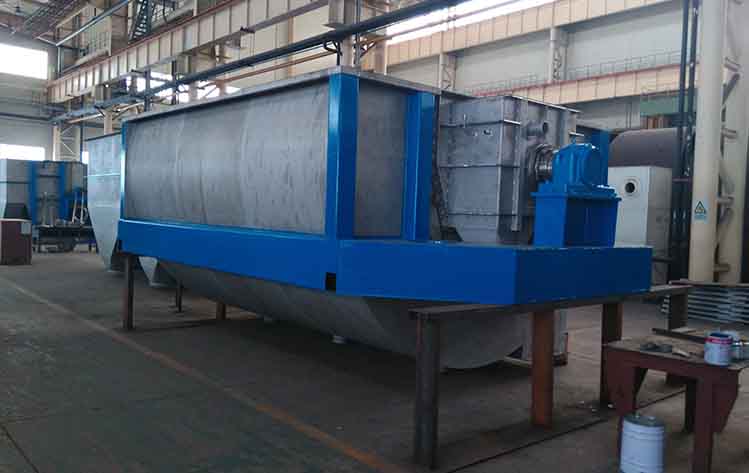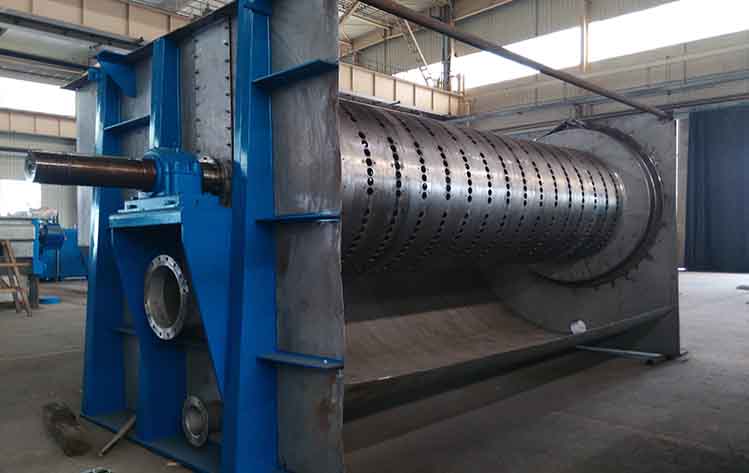

Paper making machine is a kind of necessary equipment for every paper making mill. It can be divided into long screen type, round screen type, net type, stacking type and with decorative roller if they are divided according to the structure of the screen. A paper machine can be thought to be a combination of multiple equipments. The components of the machine are divided into two parts: wet section and dry section. The components of wet section include a flow equipment, a screen part and a press part. The components of dry section include a dryer, a calender, and a rewinder.
The raw materials are added, sized, filled and purified to become a pulp having paper making properties, and then the pulp is fed into flow device of the paper machine at a concentration of 0.3%-1.3%. After the distribution and leveling of the pulp by flow distributor and head box, the pulp is uniformly and stably transported to the forming screen surface. The pulp is filtered and dehydrated on the screen to form a continuous wet paper web. The screen is mainly provided with dewatering such as roll, vacuum suction box, and roll. When the wet paper web is dehydrated to a moisture content of about 20%, it can be stripped off from the screen surface and sent to the press section for further dehydration.
The press section is composed of several sets of roll press felts, and the wet paper web is supported by press felts and is mechanically pressed between the press rolls for dewatering. In order to maintain good dewatering performance of the press felt, the upper roll is provided with a felt washing device. After the press section, the dryness of the wet paper web is generally about 40%.
After dehydrated by the press section, wet paper web needs to be further dehydrated by heating and drying, etc. The drying section of the paper machine has a plurality of drying cylinders, which can be heated from the inside by steam, and the dry felt is coated on the drying cylinder to enable the paper web is pressed against the cylinder surface to improve heat transfer efficiency. After thorough drying, a calender of 6-8 rolls is used to improve the overall web surface quality.

